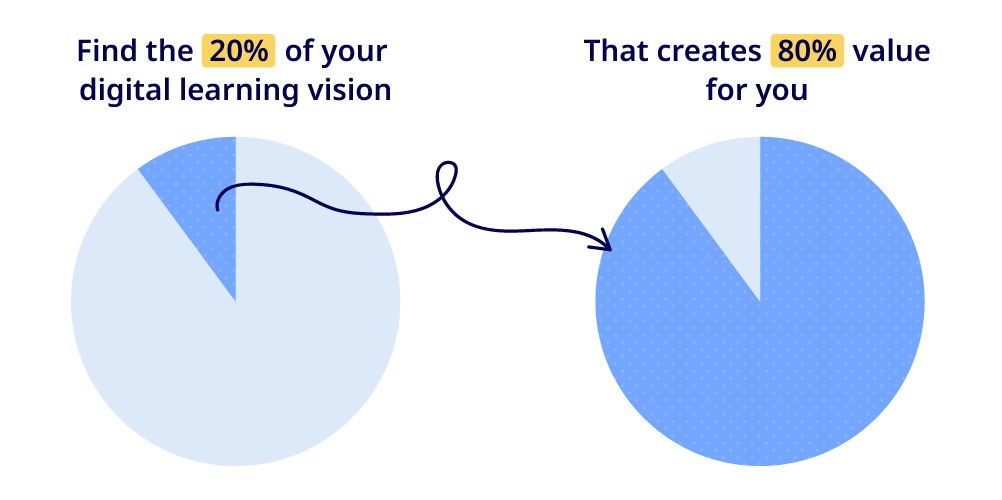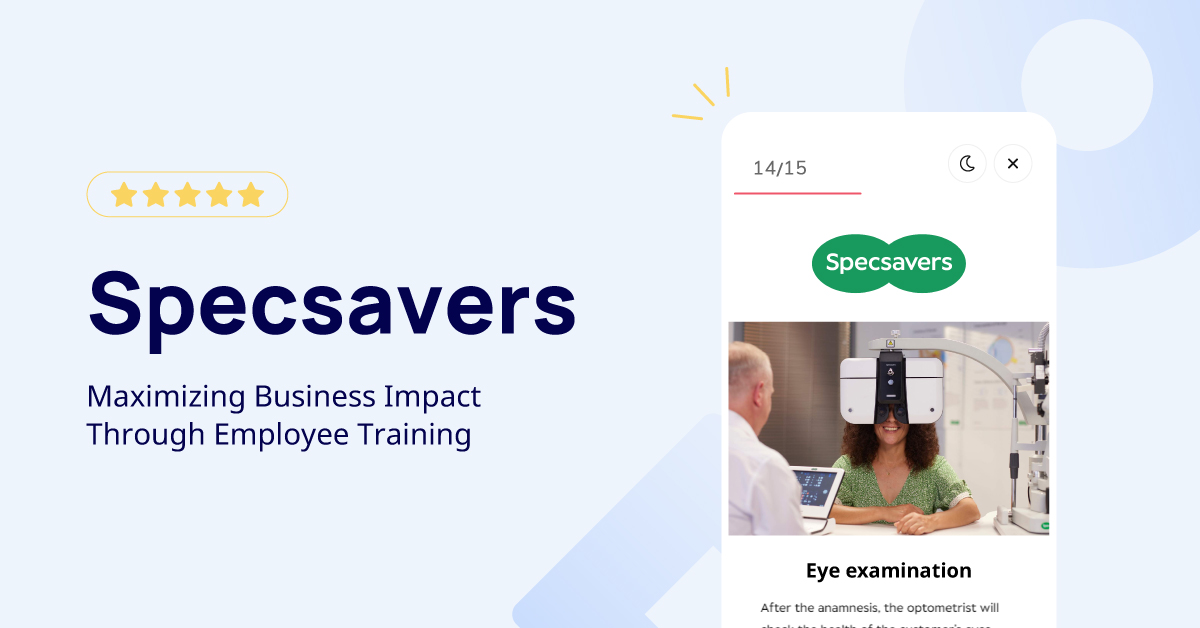It's easy to want to do it all. But doing it all at once is a good recipe for failure. So, instead, focus and prioritize your learning projects. That way you can maximize the impact and value your employee training has on your business. But how do you do that?
Get a sharp butcher's knife and cut to the bone before you get started for real. In that way, you create more value. In this article, we will show you what you can do and how to put focus on the right parts of your employee learning and training. And how to do it well.
But first, however, you need to know about a common issue to know what to avoid.
The Classic Pitfall
Unfortunately, many digital learning projects aim too wide. Typically, a company wants to solve all the skills needs right away after acquiring a new awesome learning platform.
And it is, without a doubt, a great ambition. But the challenge is that it often ends up hitting nothing if you try to hit it all.
If your digital learning should make a real difference, it should be measurable at the bottom line. Lowering the ambition a bit and taking one step at a time would be wise.
The Pareto Principle
So, once you have taken a few steps down the ambition ladder, start by centering your learning project in a focused way. Get rid of low-impact learning to avoid it stealing your focus. Find the learning project that gives your company the most impact.
How do you do that? One way is to declutter your ambition using the Pareto Principle, also known as the 80/20-principle.
It's a principle often used in sales. It is claimed that 80 percent of a business's sales usually come from 20 percent of the customers. It is often astonishingly close to reality.
The same principle can be used when scoping your digital learning project to up your learning and development game. Examine every training action and decision you make, and adjust it to the smaller success margin.
You need to find the 20 percent of your digital learning vision that creates 80 percent value for you. And this is exactly where you should put your efforts.
 Let's illustrate with a story: Learningbank had a customer who wanted onboarding, product training, sales training, leadership development, and customer service training. In other words: A lot.
Let's illustrate with a story: Learningbank had a customer who wanted onboarding, product training, sales training, leadership development, and customer service training. In other words: A lot.
After a workshop together, it was clear that they did not have enough resources to do it all. At least not if it were to be done properly.
The conclusion and the final choice became to create an organized onboarding program because it alone would affect most of the business standing alone. The onboarding would affect all the following areas in the company :
- A premium onboarding program: Reduced time-to-performance, increased sense of belonging
- Over-the-shoulder training: Reduced
- Expensive transportation to courses: Minimized
- Silent knowledge and unclarity: Documentation and streamlining employee information
- Fluctuating customer service: Closing the skills gap between full and part-time workers with digital learning on mobile units
Get tips from our customer Uhrenholt and see how they succeed.
How Do You Find Your 20%?
Connect your focus to your company pains. Usually, solving the biggest pains will give you the most significant impact on your business.
For example, if you experience a high employee turnover within the first year that new hires start, maybe preboarding or onboarding is your 20%. Keeping your employees long-term will have an extensive and significant impact on your entire business.
But it could also be a prediction of what will become relevant and could affect you on a broad aspect. Maybe it's been some time since the National Food Administration made their visit, and you want to make sure all your employees are aware of and handle everything correctly; then perhaps hygiene training is what will have the biggest impact on your business.
As you see, your twenty percent depends on your specific case. To find what's right for your organization, start by answering the question, 'What effect do you want from the project?'.
Once you know that and need to narrow down the focus even more, here are a few other points to help you determine what your primary focus should be:
- Are there any employee groups for whom learning is more urgent than for others?
- Are there some topics that need to have first priority?
-
Investigate the technological and psychological readiness of the target group such as;
- New vs. Old Employees
- Employees in leading roles
- Planned vs. unplanned material
Get more inspiration from Specsavers on maximizing business impact through employee training. Click on the image below👇
Key Takeaways
- Identify your key results/goals
- Apply the 80/20 rule to prioritize your tasks
- Stay focused on the most essential activities and leave the least important ones for later
Conclusion: Chasing 100 rabbits mean you will catch 0. Instead of extinguishing small fires in your company, you should focus on the biggest one that will give you the most value. When you do, you get a solution that works. And this will provide positive outcomes in many areas of your business.
So start small, and after you have done one part, you can go on to the next, second largest fire. 😉
Want to be able to prove the value of your digital learning to management? Create your digital learning business case with our free template here.

